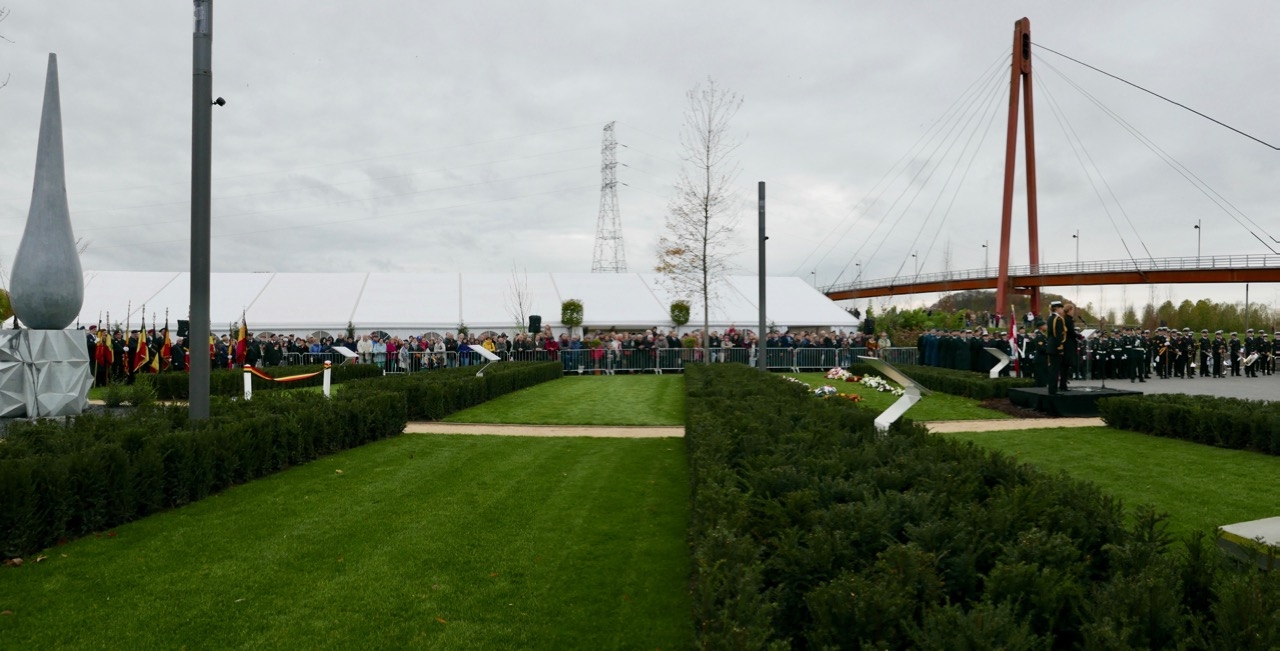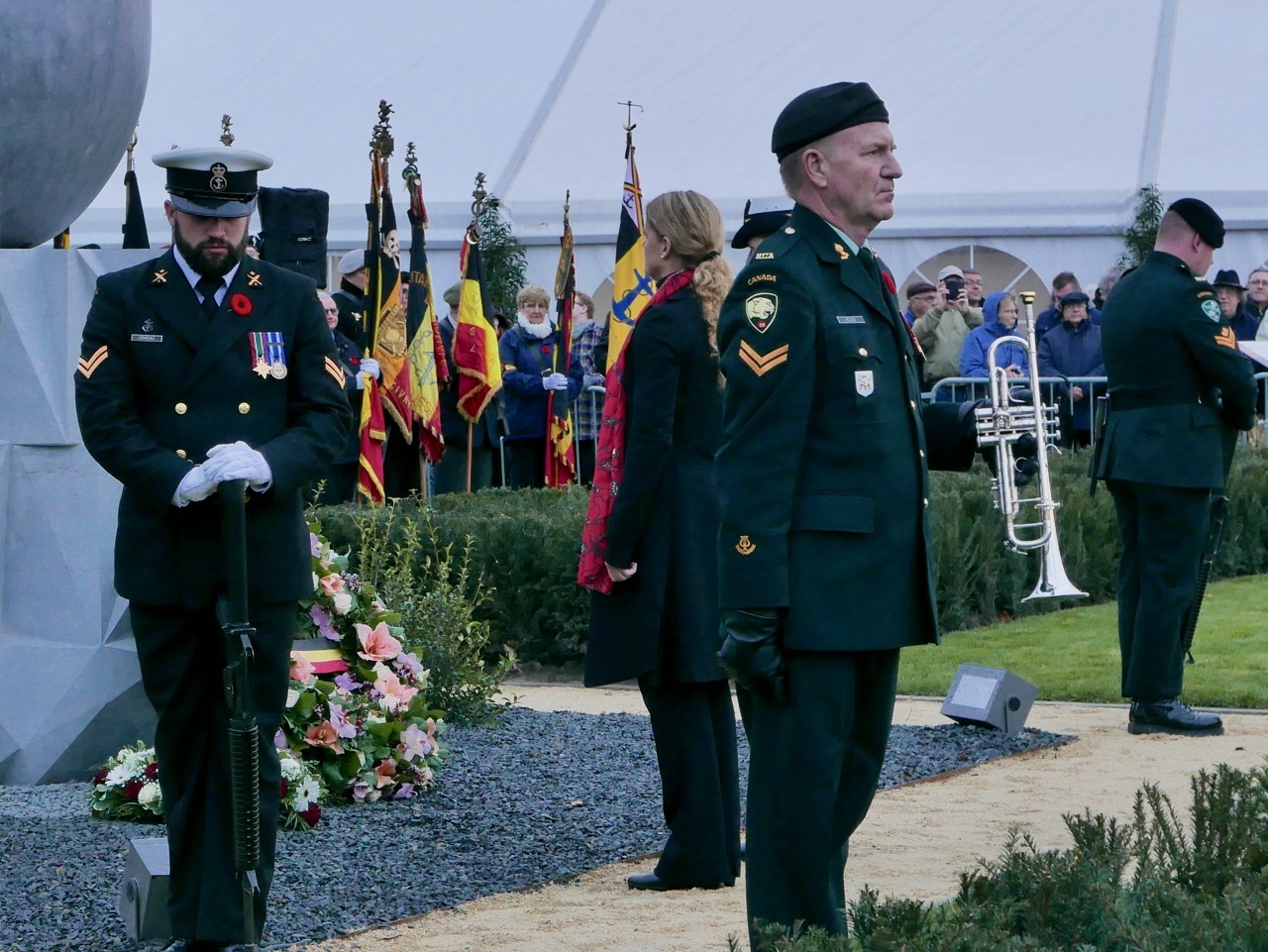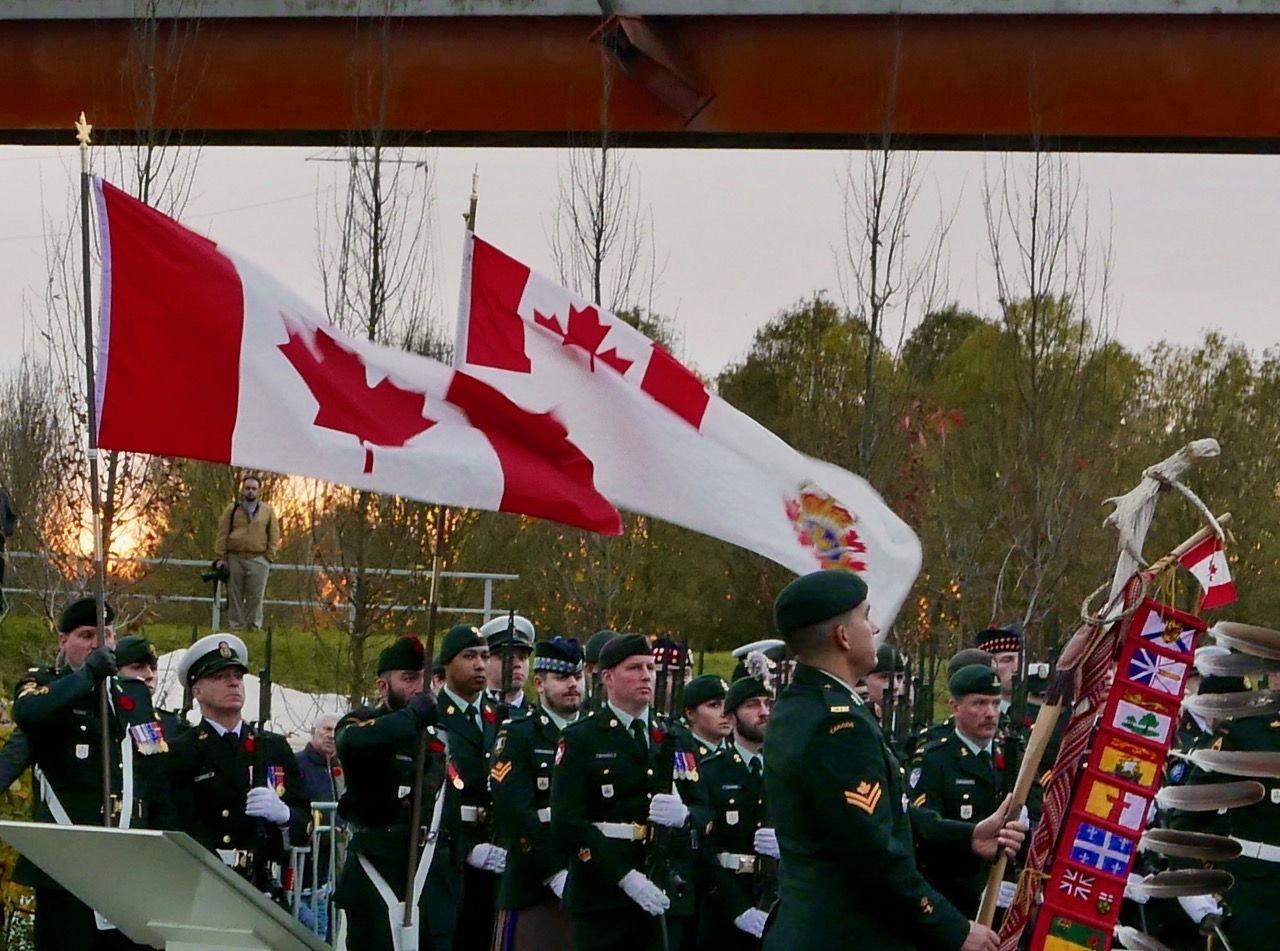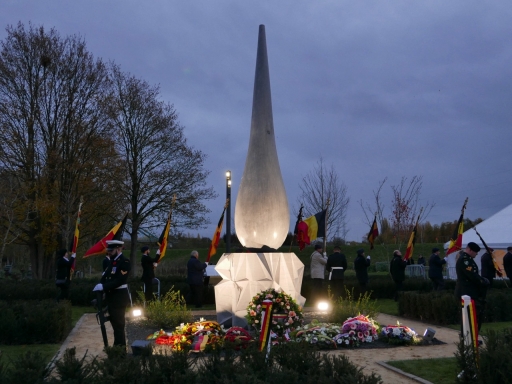The afternoon of 10 November 2018 saw the official opening of the George Price memorial, near Mons, commemorating the death of the last Commonwealth soldier to die in action in World War 1 before the Armistice took effect. CN contributor Pat Sweet was watching.
George Price, a private serving with the 28th Canadian Infantry Battalion, was shot by a German sniper near the Ville- sur-Haine canal at 10.58am on the morning of 11 November 1918.
Born in Nova Scotia in December 1892, the agricultural labourer had been conscripted in October 1917 and seen heavy fighting in Northern France. His death at the point when peace was agreed, has come to assume great symbolic significance in Mons, the site of both the first and the final Commonwealth engagements during more than four years of war.
The memorial was the result of Canadian/Belgian collaboration which began in 2014 with the intention of creating a lasting memorial on the 100th anniversary of Price’s death.
At the 50th anniversary, veterans from the 28th Battalion unveiled a plaque which was placed on the wall of a house near where Price was shot. This building was demolished when the canal was widened, and the plaque transferred to a small brick monument, while a new footbridge replacing the road bridge which existed in 1918 was named in his honour.

The new memorial site bordering the Ville-sur-Haine Canal, with the George Price Bridge in the background (Photo: Centenary News)
The opening ceremony for the new memorial was attended by Princess Astrid of Belgium, the country’s Prime Minister Charles Michel, Canadian Governor General Julie Payette, notable local dignatories, and members of staff and children from the local primary school, named George Price École in the soldier’s memory.
In her speech, Payette paid tribute to the close links which were forged between Belgium and Canada during World War 1 and which continue, one hundred years later. She pointed out that she had completed her own flying training at Moose Jaw, the military facility to which Price was originally conscripted.
 Governor General Julie Payette stands in silence at the George Price Memorial. After laying her wreath, she added her scarf of red poppies to the tributes (Photo: Centenary News)
Governor General Julie Payette stands in silence at the George Price Memorial. After laying her wreath, she added her scarf of red poppies to the tributes (Photo: Centenary News)
Prime Minister Michel, addressing the schoolchildren in particular, focused his comments on the sacrifices made by Price and his generation and the responsibility for his successors not to forget that sacrifice but to ensure peace and democracy through the European ideal.
The new memorial consists of a small landscaped area with four information boards. The main focus is a sculpture commissioned from Belgian sculptor Sylvain Patte. Patte said he began the work by looking at contemporary documents.
One of these is a note from a local teacher who retrieved a piece of fabric from Price which had on it a velvet flower, shaped like a maple leaf, and stained with his blood. This was preserved under glass with the following words from the teacher: “On this 11th November 1918, at the ultimate moment when peace was signed, you fell for us – last victim of a sad conflict. Thank you George Price! A drop of your blood soiled this simple flower you were hiding on your chest.”

The Canadian guard of honour at the Ville-sur-Haine ceremony (Photo: Centenary News)
Sylvain Patte took the drop image as the central theme for the sculpture, saying it symbolised blood and sacrifice, and also the tears of those who lost a loved one amid the suffering of war.
The resulting sculpture is in two halves – a polished drop balanced on a mound of distorted blocks, which are a recurring theme in Patte’s work.
The artist stated: “I wanted a simple sculpture that would talk to people and encourage them to learn more about the story of the this man who fell two minutes before the Armistice.
“I gave it the name of ‘Impact’ as the drop of blood crushed on the ground, the tear that flows on the skin, the impact of George Price’s story, the impact of the war on our civilization.
“It consists of two parts: the drop and the base. The very rounded upper part is precise to obtain regular curves. In opposition, a very angular base with geometric facets, shaped as it came out according to my inspiration, and the whole gives a well-balanced sculpture.”
The memorial is carved from two blocks of blue stone, with Patte saying the 360 million years-old material has accompanied man since life on earth began. It is also a natural regional resource that is weather-resistant.
Posted by CN Editorial Team, reporting from Mons
Images: Centenary News
